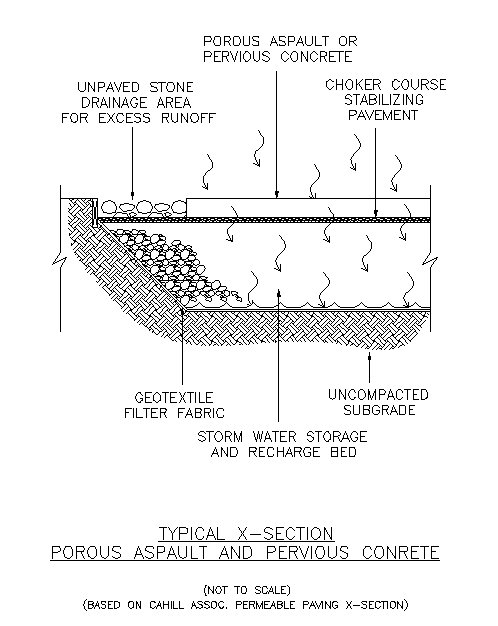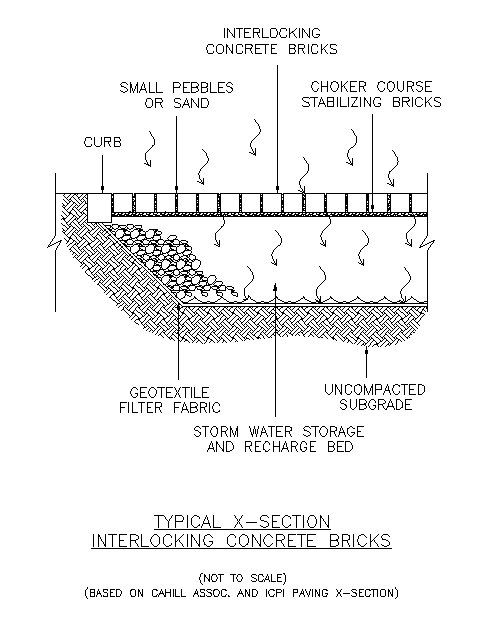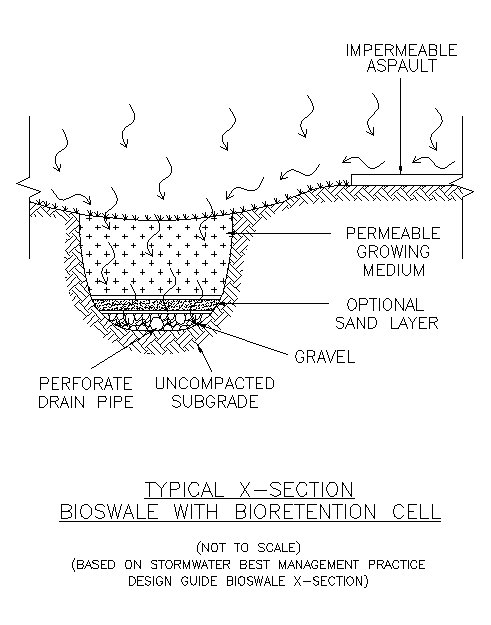The carbon footprint that conventional construction is leaving on the earth has become apparent. Green technologies are being studied and developed to help battle some of the impacting sources, such as polluted storm water runoff. This runoff contains contaminants such as foreign soils, metals, phosphorus, and oils. Impervious parking lots are a contributor to this contaminated runoff: they collect pollutants and carry it into our freshwater streams and rivers in the event of precipitation. These pollutants are affecting marine life in various ways, more specifically salmonid (salmon, trout, char, whitefish and graylings). The contaminants are affecting the fish physically, as well as their behaviour, habitat, and spawning grounds.
There are two methods of pollutant removal that are focused on in this report: bioswales and permeable paving. Bioswales are an effective way to remove and break down many of the pollutants found on impermeable parking lot surfaces. Plant matter and infiltration through a soil matrix allows the swale to collect large particles and prevent them from entering into our water. There are biota (bacterial colonies) present within the swale that are able to break down some of the pollutants to a harmless state. Swales can obtain high efficiency rates in pollutant removal and have three different design options: dry, wet, and grassed.
Permeable paving is also a viable source for removing pollutants and has similar pollutant efficiency removal rates to that of a bioswale. Permeable paving allows the storm water to be held in a stone bed comprised of clean stone aggregate where it is allowed to infiltrate slowly into the subsoil below. Biota is used along with fungi to break down the pollutants. The larger particles are then removed from the water by a geotextile fabric filter separating the stone bed from the soil below. Although there are many different forms of permeable paving three methods are examined: pervious concrete, permeable asphalt, and interlocking concrete bricks.
The newly recognized technologies that are designed to purify contaminated runoff make a huge difference in the amount of pollutants reaching streams and rivers. Each of the methods offers a variety of aesthetically pleasing choices which can easily be implemented into future construction, and/or improve impermeable areas.
Subscribe to:
Post Comments (Atom)






When I saw this article it made me smile. It's called "Homeowners looking to go green may want to look into a grass driveway". Apparently, some people are putting grass in their driveways now. The turf is kept in place by a plastic grid underneith to withstand the weight of vehicles.
ReplyDeleteArticle on Yahoo
Ah, I know what your talking about it's called lattuce paving... basically what it does is allows water to infiltrate through the driveway between the spaces that are filled with grass so that the water doesn't go into or drainage systems, rather it is retained in the ground.
ReplyDelete